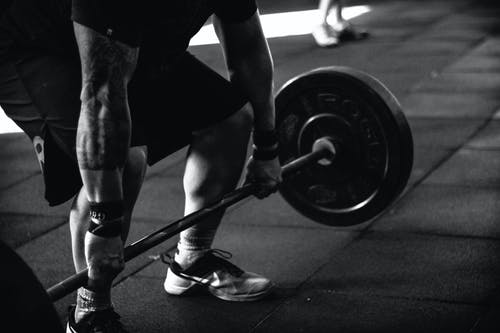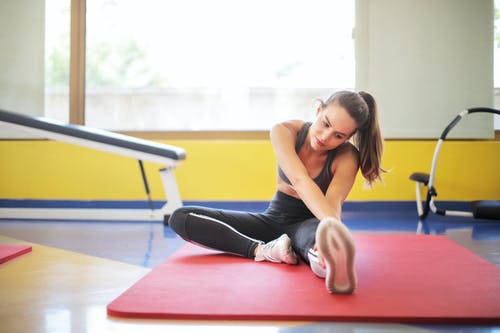A whole blog on breathing?! Seems a bit excessive for something we do naturally all day, everyday, right?! Wrong! Breathing is the foundation of our very existence and is inextricably linked to both our physical and mental health. Physical activities such as walking, lifting and cleaning have a clear effect on our breathing as do psychological states such as stress and relaxation. By learning how to control our breath we can help to manage our physical and psychological states to best support us.
Improper breathing during exercise can cause us to fatigue more quickly, cause dizziness and increase blood pressure which can even lead to fainting. Whilst this is in extreme cases, learning and practicing certain breathing habits during exercise can help us to get the most out of our workouts. It can also help us to avoid some exercise/weight related injuries. Of course we need to breathe to get oxygen, which every cell in our body needs to work including our muscles. During exercise as our cells are working harder we need more oxygen, making breathing more important than ever. Proper breathing can help you to lift heavier, give you more muscular endurance during training and can help you recover more quickly during high intensity activities and in breaks in training such as circuits. It’s something that many personal trainers get asked about often and so if it’s something you’ve ever wondered about or struggled with whilst exercising, read on! And if it’s something you’ve never even thought about then definitely read on!
Cardiovascular Exercise – These type of activities naturally speed up breathing and if we become too short of breath it can cause us to need to rest more often and reduce our performance. With a little thought and practice, however, proper breathing techniques can help to improve our performance and overall enjoyment of cardio exercise.
Consistent, measured breathing during cardio as opposed to short and erratic breaths helps to deliver more oxygen to the muscles as well as dilating blood vessels to help blood flow to the heart so that it can work more efficiently. With long distance/ endurance exercise this can help to maintain a steady, consistent pace.
With running, for example, you may breathe in for 2 or 3 foot strikes and out for the same number. Whilst some people will argue that a certain number of foot strikes or seconds is better, a general rule of thumb is to keep it even at whichever pace works for you. Consistent doesn’t mean slow, however, as too slow or relaxed breathing will reduce the amount of oxygen brought into the body and thus reduce your ability to perform aerobic activities. Try counting an even number of seconds for the inhale and exhale and the same with foot strikes to find what works for you. You should also practice diaphragmatic breathing, explained later.

Resistance Training – To breathe properly during resistance training, you should exhale on the hardest part of the movement/ on exertion and inhale on the easier part. Some examples of this include exhaling as you curl up during a bicep curl and inhaling to release to the starting position, exhaling as you push the barbell away from your chest in a bench press and exhaling as you curl up in an abdominal crunch. Think of it as exhaling as the you feel the muscles working hardest and tensing. Try to inhale through the nose and exhale through the mouth or nose. Breathe out as you pick up a weight to exercise too, this also applies to everyday scenarios such as moving heavy furniture or lifting something. This tends to come quite naturally, for example if you were trying to push a sofa along a floor and someone counted down, you would naturally go to exhale as you pushed. When we exercise we tend to overthink this and along with changes in our breathing anyway we can lose these helpful habits. It’s crucial to avoid holding your breath when lifting weights. We tend to do this unconsciously if we lift heavy weights or when doing an isometric exercise (holding still) but it can lead to negative effects such as high blood pressure and even fainting in extreme cases.
When you breathe out it increases core engagement. In strength training this equals more power and stability which helps on the most challenging part of the exercise. This exhale also acts as pressure release valve to help reduce blood pressure to avoid dizziness or light headedness.

Stretching/ mobility focused activities – During these exercises and activities such as yoga, long and deep breathing is usually best as it can help to ease tension and thus improve our range of motion. When we hold our breath, our bodies hold tension. An elongated breathing pattern can therefore do just the opposite and help to relax muscles. This is crucial when we’re trying to move deeper into a stretch. For mobility movements we should aim for inhales and exhales of 4-5 seconds each or longer if possible. Just like the diaphragm relaxes on our exhale, so do our other muscles and so you may find that you can elongate a stretch even further during this time.

Relaxation/ stress or anxiety management – Similarly to during yoga or mobility exercises, for relaxation and stress/anxiety management we want to encourage a release of tension. Long, deep breaths are therefore ideal. This helps to promote the relaxation response in the body, as opposed to short, shallow breaths which are often associated with the ‘fight or flight’ response to stress and anxiety. Some examples of breathing techniques you could try are:
Square breathing – This simple breathing exercise involves picturing a square in your mind or even drawing one on a piece of paper. You breathe in for 4 seconds as you trace a line along one side of the square, hold your breath for 4 seconds, breathe out for a count of 4 and hold for 4 before beginning again. As you do so you should trace the 4 sides of the square in your mind or with your finger. This can have a soothing and almost hypnotic effect.
Nostril breathing – Use your finger to close your left nostril and inhale deeply through your right. Then use your finger to close your right nostril and exhale through your left. Inhale deeply through your left and then switch sides with your finger to exhale through the right. This is one cycle. This breathing practice can help to promote relaxation and reduce stress levels and heart rate. You should avoid this one if you’re feeling unwell or congested at all though.
7/11 breathing – A classic breathing technique which centres around making exhales longer and slower than inhales. You breathe in for 7 seconds and out for 11 seconds. This is a general guideline, however, and if you struggle to breathe in for this long then don’t worry about it as we are all different. Try to make your out breaths several seconds longer than your in breaths and find a breathing pattern that’s comfortable for you personally. Again this should help to promote a relaxation response in the body and mind.

Diaphragmatic/ belly breathing
During exercise as well as in everyday life, diaphragmatic breathing is often recommended. The diaphragm is a muscle between the chest and abdomen and should be engaged when breathing, sometimes known as belly breathing. Many of us take shorter, more shallow breaths that begin and end in the chest. By breathing in this way, we are unable to deliver as much oxygenated air to our lungs which increases our heart rate and blood pressure. As these are often increased during exercise anyway, it’s important to control this wherever possible to help reduce unwanted effects. Short, shallow breaths are often common during times of anxiety and stress and so this way of breathing is highly useful to manage psychological states too.
Diaphragmatic breathing involves inhaling through the mouth or nose (preferably the nose) and engaging the diaphragm, filling the abdominal area with air as opposed to the chest. You should feel or see your stomach noticeably rise and expand, then lowering and shrinking as you exhale and expel the air.
Whilst certain ways of breathing or breathing exercises may feel unusual or challenging at first, the muscles involved in this process respond well to practice and repetition just like our other muscles. Try practicing these methods of breathing during times of rest and relaxation or during lighter exercise sessions and you will be more able to access them in the times where they are most needed. As always, please let me know if you found this information useful and if there’s anything else you’d like to read in these blogs.
Bev Meakin – Personal Trainer/Exercise Referral Officer and Complementary Therapist

